MARKET OVERVIEW
The Global AI in Computer Vision market is a rapidly evolving section of the technology industry using artificial intelligence (AI) to augment computer vision systems. This market consists of machine learning algorithms and deep learning models that allow computers or machines to interpret and understand the visual world and phenomena that were exclusively human. With AI integrated into computer vision, more advanced image recognition, automation, and decision-making processes will be achieved in sectors like healthcare, automotive trade, retail, and security.
In the context of computer vision, AI marketing assumes technologies that allow machines to analyze, process, and understand images and video data via complex algorithms. They have been increasingly adopted across numerous industries, allowing the AI models to improve the efficiency of tasks like facial recognition, object detection, and image classification. Global AI in Computer Vision is seeing advancements due to the technology itself wherein AI models continuously improve with greater accuracy, scalability, and the ability to work in real-time on larger data sets.
The more the different industries digitize and automate their operations, the more demand for AI-based computer vision tools. Such demand is more profound in some areas where visual data has a central place, for instance, in the case of autonomous vehicles, medical imaging, and manufacturing quality control. High-level computer vision systems are needed to guide autonomous vehicles that interpret the environment and navigate safely. In the health sector, AI-based computer vision can analyze medical images to assist doctors in interpreting conditions like cancers and heart disease. Applications such as these are the reasons the Global AI in Computer Vision market is gaining importance across industries.
Apart from healthcare and automotive, AI in computer vision is picking up steam in retail, where businesses deploy imaging recognition technology to enhance customer experience and inventory management. AI can assist retailers in monitoring store activity, tracking consumer behavior, and optimizing product placement. In security, AI systems are enhancing surveillance by identifying potential threats faster and more accurately than traditional systems. On the back of such vast capabilities, AI in computer vision is advancing further across different industries, making it a life support for digital transformation in various organizations.
The future of Global AI in Computer Vision is likely to be backed by sustained developments in machine learning and neural network architectures. This would allow the systems to become radically more efficient in interpreting highly complex instances of visual data and to provide correspondingly high-fidelity answers.
Regulatory considerations and ethical concerns will also influence the future of the Global AI in Computer Vision market. As issues of privacy become more central, there will be an increasing requirement for frameworks to establish the safe and responsible use of AI in sensitive applications, such as in surveillance or healthcare. Companies and regulators will have to work together on the ethical and legal- compliance in local and international standards.
From that perspective, it is expected that the Global AI in Computer Vision market will usher in a transformation in industries concerning devising methods for machines to interpret visual data at greater speeds and accuracies. With further development and contamination of AI technologies, the future impacts of AI in changing computer vision will certainly impact businesses and industries.
Global AI in Computer Vision market is estimated to reach $85,934.54 Million by 2032; growing at a CAGR of 22.0% from 2025 to 2032.
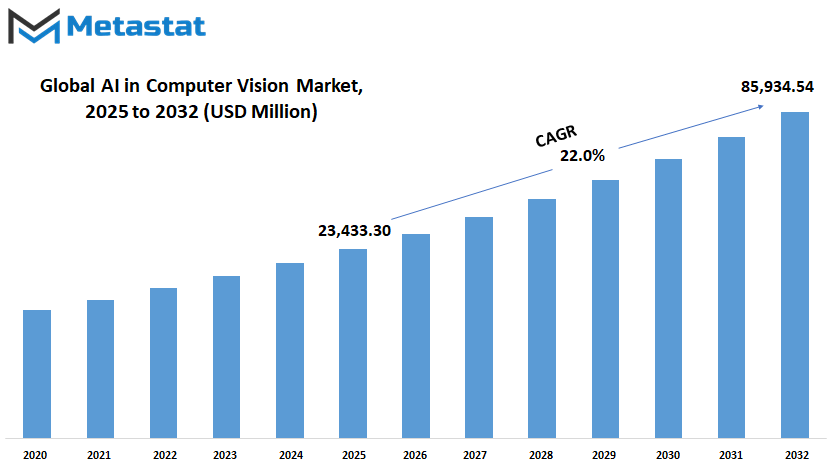
GROWTH FACTORS
The global AI in Computer Vision market registered a phenomenal change during the past years due to numerous ongoing technical advancements and rising adoption in diverse sectors. The upsurge has been facilitated largely by the increasing applications of automated and machine
The automation of processes has increased efficiency in several businesses, making it mandatory for AI-enabled computer vision solutions which greatly reduce the time and labor needed to perform tedious and often laborious tasks such as product defect detection, monitoring of assembly line activities, and total improvement in product quality. In fact, several companies' manufacturing processes now find the involvement of machines in such processes so valuable that it helps avoid human error and speeds up the length of time it takes for production.
In addition to the many aspects of automation, the other key area that will drive AI adoption in computer vision in the next few years is the demand for face recognition and surveillance technologies. With security threats looming large across the world, the ability to identify people using their faces is emerging as a very valuable asset for use in both the public and private sectors. AI-based computer vision systems can ingest and process large amounts of visual data in real time, thus increasing surveillance capability.
This is seen in the increased use of facial recognition systems in airports, law enforcement, and even retail environments to help monitor foot traffic and improve customer experiences. However, this market is also faced with numerous challenges. One of the major concerns related to this aspect is the high computational requirement and infrastructure costs. Sometimes, the deployment of advanced AI algorithms and deep learning models requires substantial power to process them, which further requires specific hardware and applications.
The cost associated with them can be a barrier for small businesses or organizations with little resources and thus may slow the pace of widespread acceptance for AI-based computer vision solutions. In addition, data privacy issues and regulatory challenges with regard to images and personal data usage have also been a challenge. Increasingly, a large dataset has become a prerequisite for AI systems, thus raising questions regarding data collection, storage, and use.
Most governments and regulatory bodies are beginning to give the go-signal on stricter laws guaranteeing privacy, and compliance with these regulations could be a major hurdle for many companies as they navigate the increasingly complicated regulations surrounding those laws. Left with these hurdles, the Global AI in Computer Vision market still bears great potential for exciting opportunities for growth. The most profitable ground area for expansion remains the application of AI-based vision systems toward autonomous vehicles, healthcare, and retail analytics.
MARKET SEGMENTATION
By Component
The Global AI in Computer Vision market has made good strides, and it holds a great deal of promise as technology progresses. With industries across geographies focusing on ways to better work, maintain security, and improve performance, the integration of artificial intelligence in computer vision has become a game-changing technology. Machine intelligence serves to extract meaning and information from the visual world, making it a linchpin in applications such as healthcare, automotive, manufacturing, and retail. From the present perspective, major leaps in the Global AI in Computer Vision market are more likely to be seen in the future.
When the study examines the market by components, it is evident that both hardware and software are required for the growth of the market. Hardware, which encompasses advanced cameras, processors, and sensors, constitutes a crucial basis upon which any AI-driven computer vision system stands. In the absence of the appropriate hardware, AI systems would be unable to process the visual data on which their decision-making relies. This segment is anticipated to observe growth as enterprises employ solutions requiring high-resolution imaging and real-time processing.
Software, then, serves as the horse that drives the intelligence and analysis performed by these systems. AI algorithms and machine learning models are embedded in software that enables the system to identify patterns, classify objects, and even predict outcomes based on the visual data it processes. Software solutions are becoming more and more advanced, enabling ever-more accurate and fast analysis of images and videos. Innovations within AI for computer vision will continue to flourish, supported by the growing adoption of cloud computing and edge devices, allowing for real-time decisions in extremely dynamic environments.
Hardware and software convergence in Global AI in Computer Vision offers enormous potential. The combination of fast processors with some of the more advanced algorithms has propelled us into realms where yesterday's science fiction is becoming today's reality. The AI boom will also mean that the new computer vision system will be more navigable and adaptable so that new applications may qualify for even more industries. These technologies will probably push for greater automation and improved safety measures along with improved customer experience.
For the foreseeable future, hardware and software will work hand in hand to free up exciting opportunities. AI and computer vision innovation will grow massively and soon make their way into everyday life and business operations. As these technologies reach maturity, they will largely unlock efficiencies, resolving burning issues and enabling opportunities across the industrial spectrum.
By Function
The Global AI in Computer Vision market is growing at an unexpected rate owing to rapid technological development in machines in interpreting visual data. Artificial intelligence has transcended the current dimension as far as the analysis of images and videos is concerned. Healthcare, automotive, retail, and manufacturing have been the earliest adopters of AI and have so far benefitted from that impact. Processing and analyzing massive amounts of visual data faster and more efficiently than what humans can do has opened so many doors for the future developments of AI. The induction of AI gives innovation and encourages new applications, efficiency, and applicability in the computer vision spectrum.
Training, which involves defining by example, is one of the key mechanisms in the bringing AI into vision applications. Through training, AI learns to recognize patterns and objects or scenes in photographs. Traditionally, training AI required very large labeled datasets with images painstakingly annotated by humans. The emergence of machine learning techniques now allows even much richer and complex data sources to be used to train AI. This potential to train AI models with real, unsupervised data will only improve over time. In general, in view of the future, training AI systems for computer vision will achieve new peaks of effectiveness and correctness. It will facilitate machines to better understand what visual inputs mean and then perform certain tasks, including object recognition, facial identification, and real-time video analysis.
Inference: This refers to the second function. After the training process, an AI model is now ready to perform application on unknown or new data. Inference describes how the system can `infer' outcomes or decisions based upon its activity. In AI-equipped computer vision, inference can translate into object identification from new pictures, movement recognition from videos, or real-time parameterization of anomalies within manufacturing processes or diagnoses in imaging systems. Such types of inferences may become even quicker and more accurate as the techniques of AI continue evolving. Industries will now implement those AI solutions that can offer real-time feedback or decisions, in this sense increasing the overall efficiency of tactics and results.
The future ahead looks very bright, with plenty of potential openings in the Global AI in Computer Vision market. Training and inference will become more adaptive in their niches; they will make systems more autonomous and able to carry out even more complex tasks. However, benefits will continue reaping in companies because AI-enabled computer vision is designed for process performance enhancement through the minimization of human errors and innovation in different fields. Indeed, the scope of machines in understanding and interpreting visuals through time will continue to expand, bringing fresh and enticing opportunities for both businesses and consumers.
By Application
Significantly global AI in Computer vision market is growing because it is redefining what it means to interact with machines and technology. These changes are witnessed across industries where AI is providing enhancing computer vision capabilities and creating newer avenues for both businesses and consumers. Computer vision, simply put, gives machines the ability to comprehend and make sense of the visual world, and AI in turn amplifies these capabilities manifold. In the future, the applications of Artificial Intelligence in computer vision will only broaden, thus bringing a complete paradigm shift in industries and daily life.
AI-powered computer vision technologies will witness increasing integration into a multiplicity of applications in the years ahead. Two main industries could be identified for segregation by application: those pertaining to industrial activities and those not. In industrial applications, AI holds a paramount value for computer vision in terms of improving manufacturing processes, enhancing efficiency, and minimizing human error. Production lines will increasingly feature machine vision systems employing AI algorithms-perform quality control, object and defect recognition. Considering tasks traditionally requiring supervision or intervention by humans will have higher accuracy, with less waste and increased safety through automation.
Non-industrial applications for AI in computer vision will begin to give a new face to healthcare, retail, and automotive industries. In the healthcare sector, diagnostics will be AI-enhanced, and the computer vision tools will analyze medical images such as X-rays and MRIs. This tool will enhance not only speed in diagnosis but also accuracy for doctors to arrive at better decisions. Retail computer vision systems will keep evolving for improved inventory management, customer tracking, and enhanced shopping experience. AI computer vision will also set the stage for assisting the smart autonomous vehicle in safely driving down the road by interpreting the real-time view of its surroundings.
The future of AI in Computer Vision is surely basking in the limelight of glory. With the technological innovations, present-day AI continues to play an enhanced role in computer vision with the blessings to industrial applications and non-industrial applications alike. Innovatory applications of AI systems will transform several domains with additional intelligence and accuracy, thereby creating an efficient, connected, and automated world. The immense potential of AI in computer vision has barely begun to be harnessed, and as this market grows, it will undoubtedly give rise to inventions that we can hardly imagine today.
By End Use
With the advent of technology, there is a fast-growing market for global AI in computer vision and would-be-lines of growth in future. The definition of AI in computer vision is applying artificial intelligence in order to enable computers to interpret and understand the meaning of vision information. This new technology is changing industries by revolutionizing and making things more precise and opening up new potential for new operations in any area. Forecasting under this premise that as AI application expands horizontally within the intellect of possible application events, future demand will spur the ongoing growth of such a global market as smart and efficient systems persistently mushroom in various units.
Computer vision will be an artificial intelligence that is relevant in the automation of vehicles. Its function will be towards the self-driving cars that depend mostly on computer vision to see what surrounds these vehicles. This entails being able to detect obstructions, interpret traffic signs, and navigate through complex road conditions. Adapt the new cars under technology such that they become more autonomous with better safety and efficiency levels. In the area of manufacture and quality control, the original additional advantage brought by AI will suffice. It goes so far as inspecting products at incredibly high speeds and is said to minimize or eliminate maximum human errors concerning superior quality.
AI in consumer electronics currently plays a critical role in enhancing user experiences. Smartphones, smart cameras, and wearable technology continue to develop even further with this technology: face detection systems will soon be standard in application use, further personalizing and securing individual interactions within devices. The progress into intelligent devices with AI-enabled visual recognition, which consumer electronics will witness soon, will set devices smarter and more instinctual.
AI in computer vision will also open the doors, and it can be a revolution for the healthcare sector. One of the applications of AI in medicine is to drastically improve the accuracy and speed of medical imaging. By using artificial intelligence, X-rays, MRIs, and CT scans can be analyzed with precision, thus enabling the doctor to strike a more accurate diagnosis of the disease earlier on. As medical imaging becomes more advanced technologies, such verification tools will soon be included as part of mainstream health and treatment planning available for doctors so that this becomes a more robust tool for diagnosing patients.
AI in computer vision just starts in one series to be very broad-reaching and has tremendous potential applications in agriculture. These include analyzing crop health, monitoring soil conditions, and diagnosing pests or diseases at an early stage. All this enables farmers to make smart and informed decisions leading to increased crop production and less use of harmful chemicals. Future intelligent farming will not be without its resource efficiency.
In transportation and logistics, AI in computer vision will optimize supply chains, monitor fleets of vehicles, and boost safety procedures. Automated warehouses and self-driving delivery vehicles are no longer futuristic concepts; soon they will become fixtures of everyday life, even if their practices develop further over time, making logistical operations more efficient and cost-effective.
Computer vision is also making heads turn in the retail for inventory management, customer experience development, and enhancing security. AI is going to allow the stores to track inventories in real time, predict consumer behavior, and eventually deliver personalized shopping experiences.
Security and surveillance applications are another area where AI is being rapidly adopted in computer vision. AI video analytics can monitor very large areas in real time, quickly and accurately identifying potential threats that conventional systems would take hours or days to investigate. As technology becomes smarter, these very systems will be integrated, further enhancing safety and security in both the domestic and public arenas.
Many still consider the future of AI in computer vision to be extremely bright, with countless industries already harvesting the benefit of its capacity for processing visual information in ways rarely thought possible. Be it healthcare or automotive, computer vision powered by AI will let a critical hand in overall shaping technology's future. As AI gradually finds acceptance in virtually all industries, innovation is bound to accelerate and make way for these systems to become more intelligent and efficient around the globe.
|
Forecast Period |
2025-2032 |
|
Market Size in 2025 |
$23,433.30 million |
|
Market Size by 2032 |
$85,934.54 Million |
|
Growth Rate from 2025 to 2032 |
22.0% |
|
Base Year |
2024 |
|
Regions Covered |
North America, Europe, Asia-Pacific, South America, Middle East & Africa |
REGIONAL ANALYSIS
A considerable transformation is being witnessed in the global AI in Computer Vision market due to the advancement in artificial intelligence and machine learning technologies. With the increasing pace of digitization, AI-enabled computer vision systems are finding applications in almost all industries. These systems provide an interface for machines to comprehend and interpret visual information mimicking human eyesight. Various applications include autonomous vehicles, healthcare, retail, and security. The growth prospects of this market will be determined by variations in the uptake of technology, infrastructure development, and government regulations across regions.
North America is currently the leader in the AI in Computer Vision market worldwide. The United States, Canada, and Mexico are the innovation leaders with higher turnover and R&D expenses. In the U.S., there are several tech giants and numerous start-ups concentrated on pushing the frontiers of AI and computer vision. In terms of technology building and with respect to regulations, this region promotes the establishment of computer vision solutions mostly in the field of autonomous vehicles, surveillance, and medical imaging. North America will continue to be the main spot for innovations and advancements in computer vision for as long as AI exists.
The involvement of European countries in the market is huge. It looks after ethical development of AI, data privacy laws, and innovation. UK, Germany, France, and Italy have invested massively in AI research focusing on healthcare, manufacturing, and security. Europe takes a special approach towards AI development in the sense that it tries to foster innovation at the same time protecting the rights of individuals, which may impact the way computer vision systems are designed and deployed in the future. Therefore, a tech-and-growth infrastructure coupled with very strict regulatory frameworks will keep Europe alive in the market.
Countries such as China, India, Japan, and South Korea in the Asia-Pacific region have come a long way in AI and computer vision. Especially, China has secured topmost position globally in research and development of AI, where-since the past few years-the government has also promoted several AI initiatives through funds and strategic policies. Japan and South Korea have emerged as key proponents in the market with solid technological groundwork. The AI-powered computer vision systems are spreading extremely fast in the industries of electronics, automotive, and robotics in that region. The heterogeneity of economies and the technological upgradation in the Asia-Pacific region will assure the region's vital significance in sketching the way for the future of the AI in computer vision market.
In South America, the Middle East, and Africa, interest in Computer Vision AI is growing, but it is growing slowly. Moreover, nations in the Middle East and Africa have begun to utilize AI for the enhancement of infrastructure, security, and service delivery. There are areas that require addressing, such as funding, technological infrastructure, and regulation, for the regions to harness the full potential of AI in computer vision.
In conclusion, with AI progressing across the globe, the markets for computer vision technologies will witness varied patterns of growth across different geographies. Each of these geographical regions will have strengths and hurdles specific to them, but globally, the AI in computer vision market is projected to develop rapidly. The regional dynamics and timely technological innovation will shape the pace and path of that growth in the coming years.
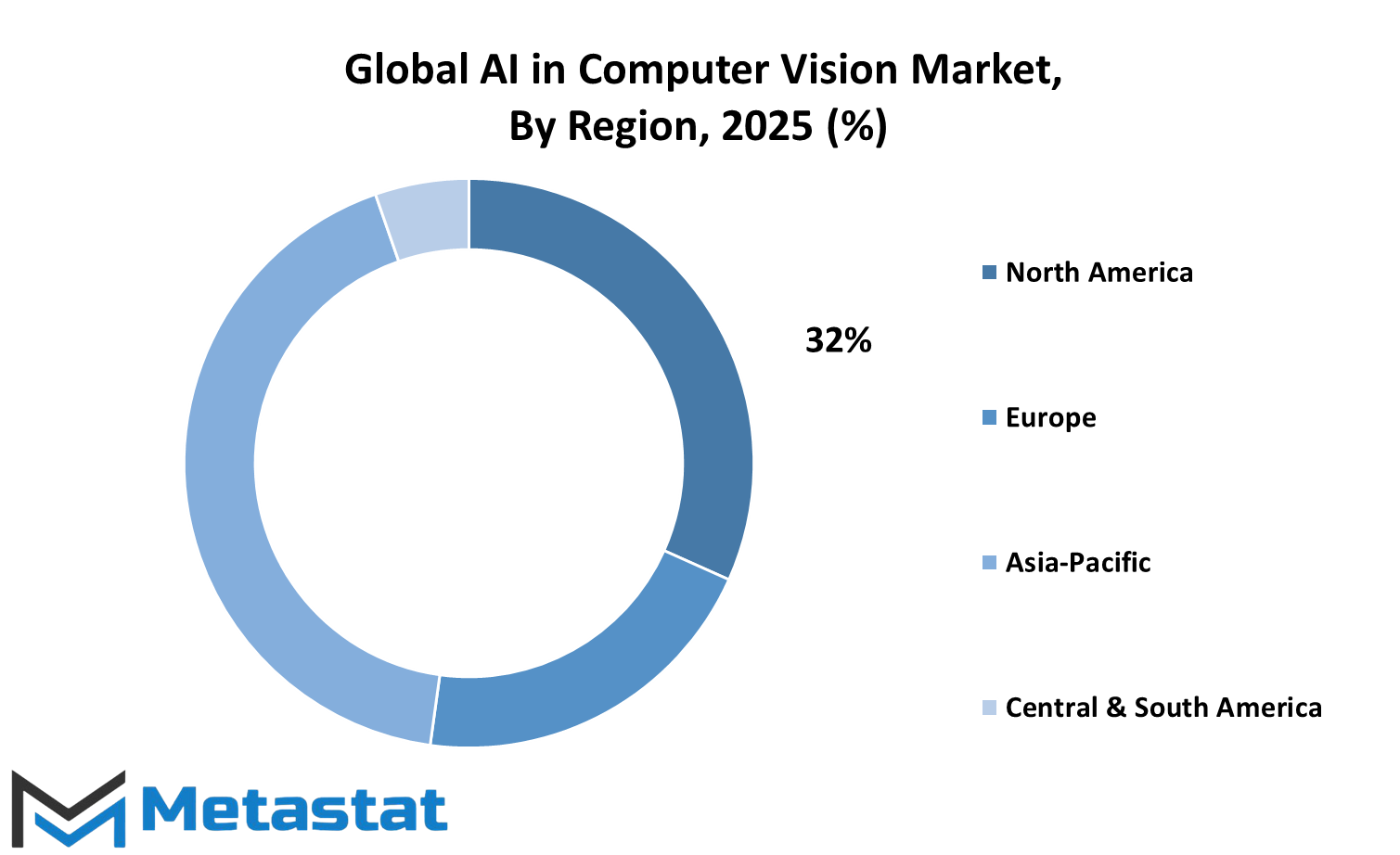
COMPETITIVE PLAYERS
In the technological realm, the Global AI in Computer Vision market is emerging as a prime focus. Artificial intelligence and visual data applications are expected to zoom up from here. Progress in this domain is being made by companies spearheading the phase of innovation and boundary-weakening of what machines can do with visual data interpretation. This change is creating a new way of business and daily life machine interaction. The business developments of the industry seem at present more or less in favor of the larger tech players. However, increasingly, newer and smaller companies and startups are beginning to add their own mark with newer ideas and more preyed-upon solutions.
In the future, the Global AI in Computer Vision will experience even smarter systems capable of processing and understanding visual inputs almost like a human. They will become more and more accurate and rapid in facial recognition, environment scanning, object detection, and action interpretation. This indicates that everything from healthcare and manufacturing to security and retail will experience substantial changes. For example, image analysis in healthcare may lead to faster diagnoses; in security, rather than recording an incident, surveillance systems may act to prevent it.
Nobody can deny that competition is fierce among the key players in this market. Intel Corporation, NVIDIA Corporation, and Qualcomm Technologies, Inc. are constantly investing research and development money to gain performance-and-cost advantages. Advanced Micro Devices, Inc. and Microsoft Corporation are also making advances, including improvements to processing technologies and cloud services, while IBM Corporation and Hailo are instead emphasizing smart hardware for efficient AI use on devices. Meanwhile, Amazon Web Services, Inc. and Huawei Technologies Co., Ltd. are putting together scalable AI platforms that support a myriad of applications. Every company comes with its strengths around computing, storage, and software integration.
In addition, Basler AG, General Electric Company (GE), and Advantech Co., Ltd. are applying solutions suitable for industrial environments. Irida Labs S.A., Clarifai, Inc., and Prisma AI are emphasizing software improvements for better image processing and understanding. Their endeavors allow the accessibility and applicability of AI in computer vision across different verticals.
As this Global AI in Computer Vision business developed, more and more partnerships and alliances began to emerge. These would fast-track the improvement of technology and pave the way for new entrants into the game.
AI in Computer Vision Market Key Segments:
By Component
- Hardware
- Software
By Function
- Training
- Interference
By Application
- Industrial
- Non-industrial
By End Use
- Automotive
- Consumer Electronics
- Healthcare
- Agriculture
- Transportation & Logistics
- Retail
- Security & Surveillance
- Others
Key Global AI in Computer Vision Industry Players
- Intel Corporation
- NVIDIA Corporation
- Qualcomm Technologies, Inc.
- Advanced Micro Devices, Inc
- Microsoft Corporation
- IBM Corporation
- Hailo
- Amazon Web Services, Inc.
- Basler AG
- General Electric Company (GE)
- Huawei Technologies Co., Ltd.
- Advantech Co., Ltd.
- Irida Labs S.A.
- Clarifai, Inc.
- Prisma AI
WHAT REPORT PROVIDES
- Full in-depth analysis of the parent Industry
- Important changes in market and its dynamics
- Segmentation details of the market
- Former, on-going, and projected market analysis in terms of volume and value
- Assessment of niche industry developments
- Market share analysis
- Key strategies of major players
- Emerging segments and regional growth potential



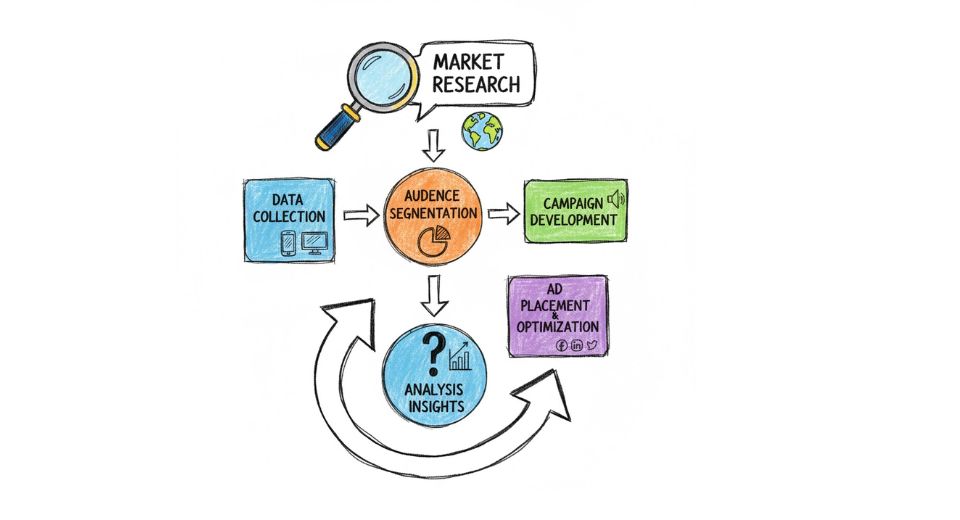
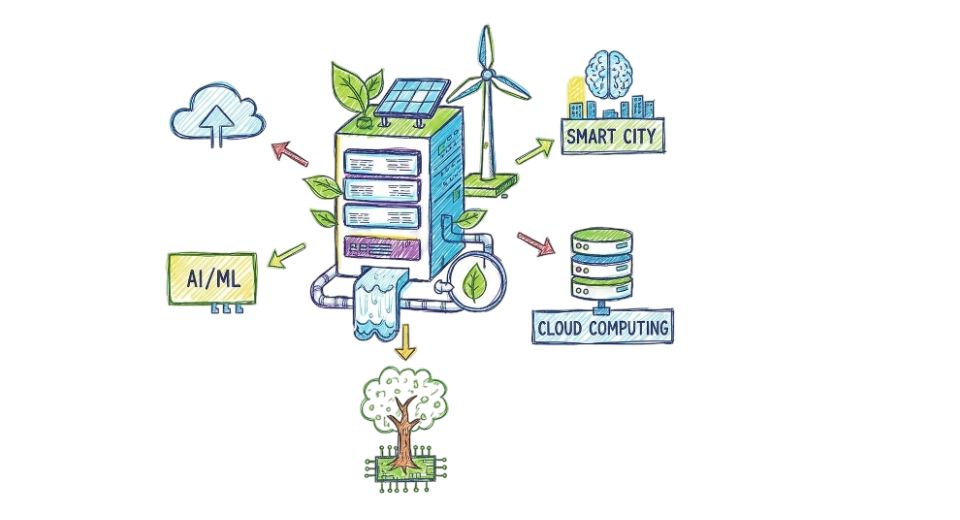
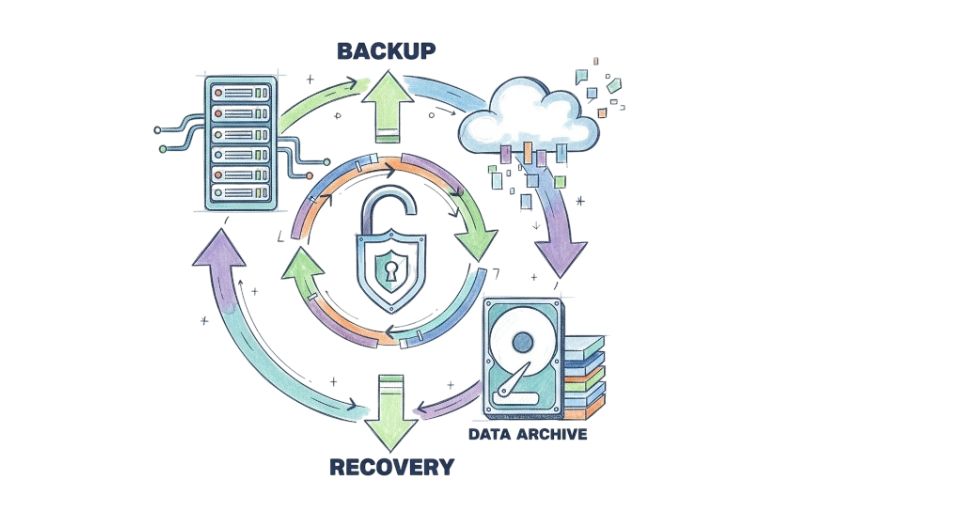
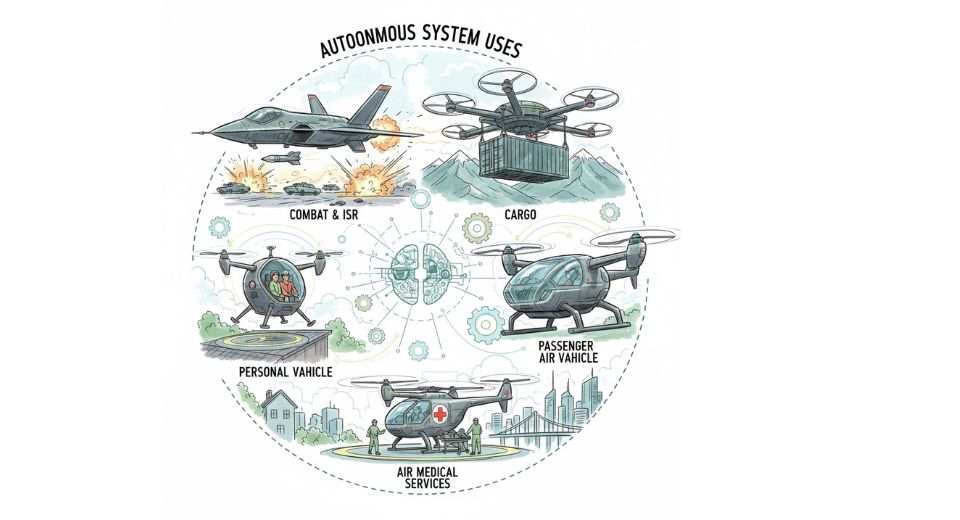

 US: +1 3023308252
US: +1 3023308252






